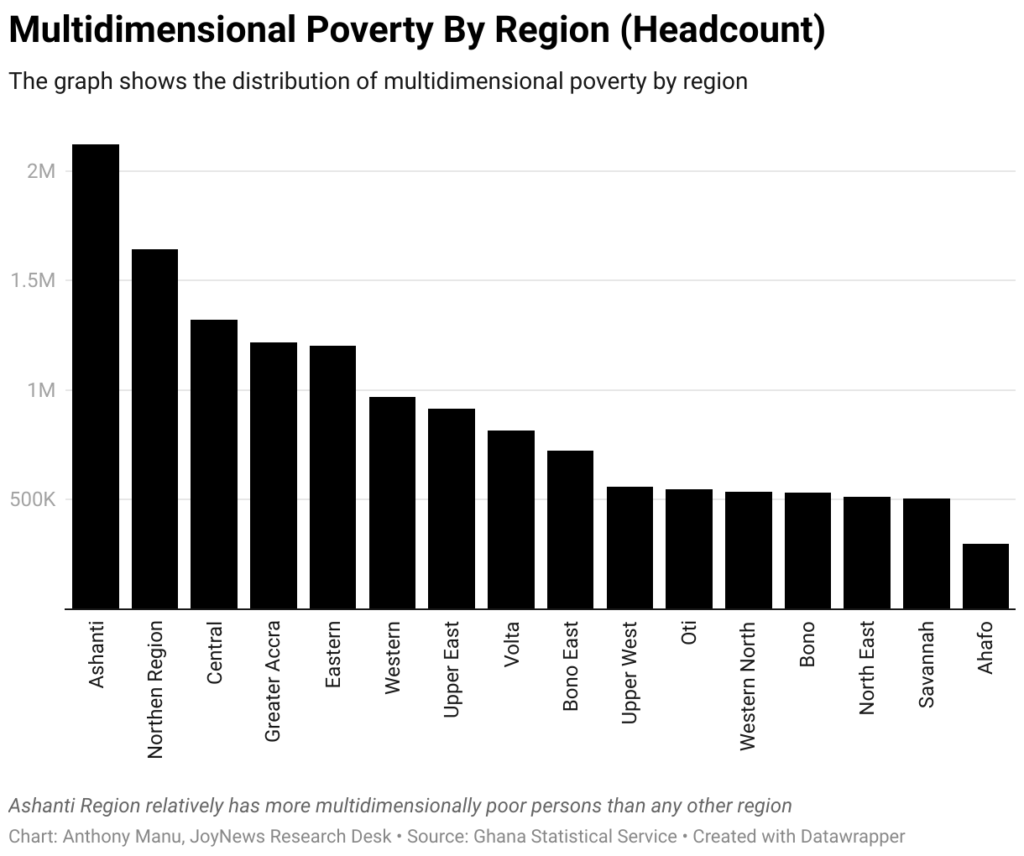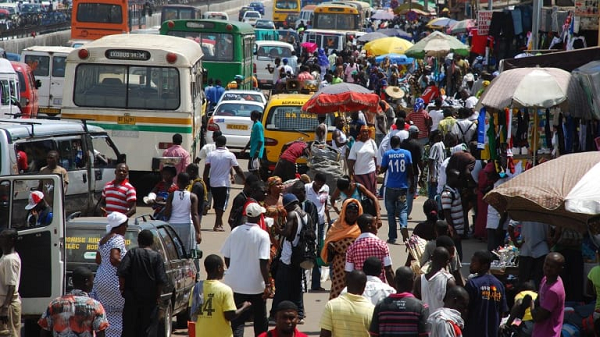5.4 million people out of the 12.3 million Ghanaian workforce are multi-dimensionally poor
A significant number of about 5.4 million people out of the 12.3 million Ghanaian workforce are described as multidimensionally poor, according to Ghana Statistical Service’s 2022 Labour Statistics report.
The figure constitutes about 44% of the Ghanaian workforce.
Data induced from the report indicates that multidimensional poverty encompasses the various deprivations experienced by poor people in their daily lives – such as poor health, lack of education, inadequate living standards, disempowerment, poor quality of work, the threat of violence, and living in areas that are environmentally hazardous, among others.
Details of the report indicated that 4.8 million out of the 5.4 million persons are employed, but surprisingly are not able to access good healthcare, education, or may be working under poor conditions.
The report could have great consequence on the productivity of the workforce as well as economic growth.
The majority of the multidimensional pool being employed explains that most of the employed people are receiving very low incomes and hence cannot afford the basic necessities of life.
It further states that some are also being paid in kind, hence becoming monetarily poor, unable to afford proper healthcare, good education, and improved standards of living.
About 2.8 million people were also considered food insecure and among the multidimensional poverty pool.
On the national scale, the Quarterly multidimensional poverty report 2022 by the Ghana Statistical Service (GSS) gives insights into the national multidimensional poverty state.
According to the report, as of the 2nd quarter of 2022, 46% representing 14.1 million of the entire Ghanaian population were multidimensionally poor.
On the regional scale, the data revealed that there are relatively more multidimensionally poor persons in the Ashanti Region than in any other region with a sizable number of 2.1 million in Q2 of 2022.

The report stated that among the multidimensionally poor, deprivation in health insurance coverage and unimproved toilet facilities are the plausible drivers of poverty in Ghana.
Deprivation in health is the largest contributor to multidimensional poverty, with a 44.1% rate, followed by standard of living at 32.8%, and education at 23.1% as of Q2 2022.
Meanwhile, Global Multidimensional Poverty Index Report 2022 by the United Nations Development Programme (UNDP) indicates, that 24.6% of Ghana’s population based on a 2017/2018 survey, are multidimensionally poor. This means that about 6 million Ghanaians were multidimensionally poor in 2017/2018.



